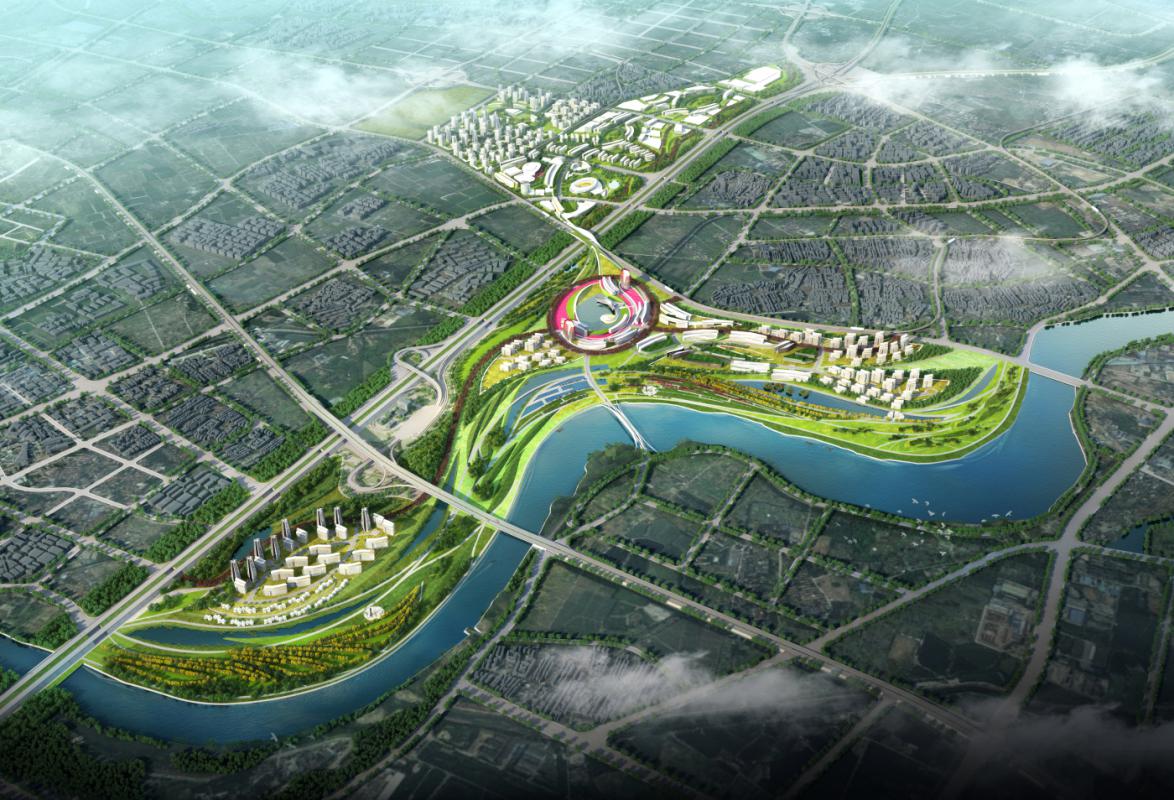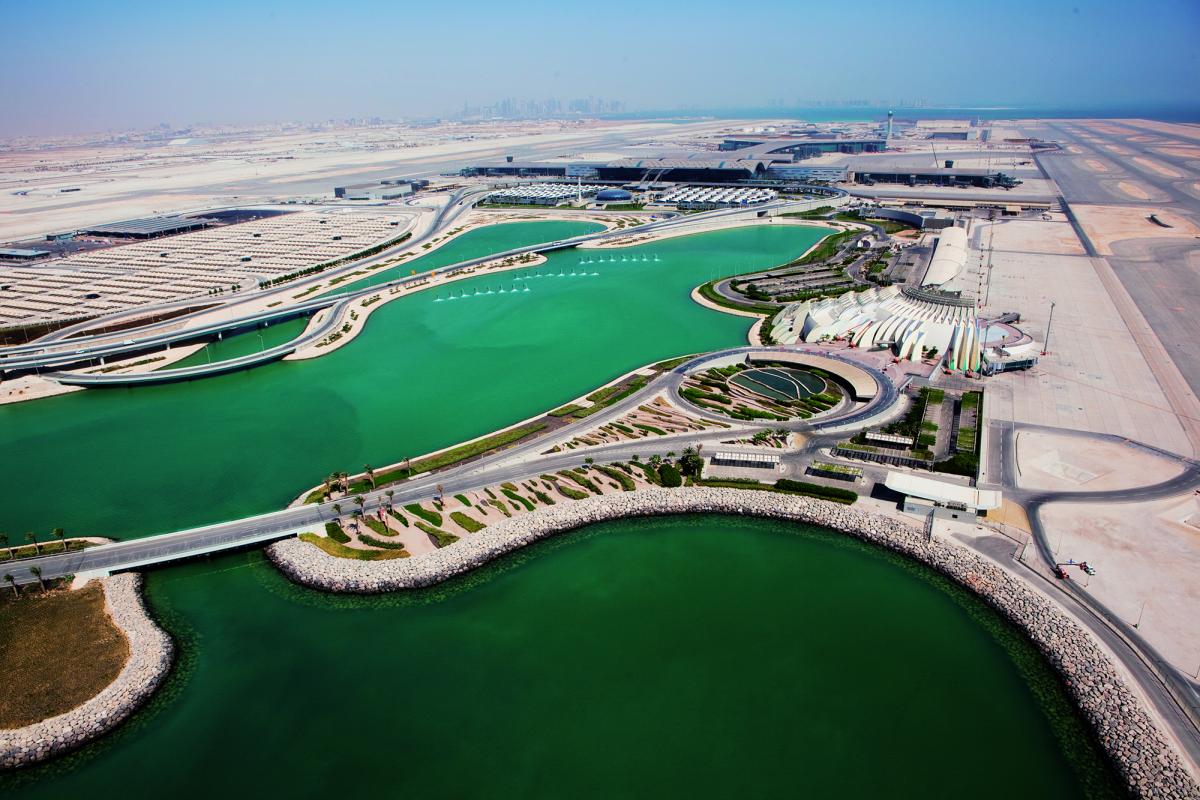
Can a city be built around an airport instead of the time-honoured vice versa? Betting very many billions of dollars, some countries say it can. Meanwhile, the jury is out.
The “aerotropolis” is an urban environment that is anchored with an airport. Over the past few years, its popularity has been rapidly gaining momentum over the globe.
But while most cities have historically been planned around a river, a port, or an intersection of trade, the aerotropolis is a city designed around an airport. Is this possible? Is this sustainable? Can a city be planned around an airport, or will airports always be designed around a city?
Question: Can a city be planned around an airport?
The term “aerotropolis” was coined fairly recently by John Kasarda, a professor of business at the University of North Carolina in the U.S., but the concept of the aerotropolis has been around for a while.
Most notably, the development of Dubai since the mid-1980s coincided with the launch of the airline carrier Emirates when it took over Gulf Air’s routes. The parallel development of Dubai and Emirates epitomizes the growth of an aerotropolis, where an airline carrier and an airport have anchored the entire city’s charge toward prosperity and global recognition.
“Thanks to the jet engine, Dubai has been able to transform itself from a backwater into a perfectly positioned hub for half of the planet’s population. . . . From its beginning 25 years ago, [Emirates] was seen as a strategic arm of the state, paying no taxes while importing the foreign labour that built the place. Using its airline, Dubai feverishly assembled a population from elsewhere—Indian entrepreneurs, British bankers, Russians buying condos with suitcases of cash—thus creating the ethnic enclaves and gated communities that define the place,” Greg Lindsay wrote in “Cities of the Sky,” Wall Street Journal.
Many other cities have also been advancing toward aerotropolis status. Abu Dhabi followed in Dubai’s footsteps by creating its own airline through royal decree in 2003 and feeding it with US$51 billion worth of aircraft. And Doha International Airport, which is home to the state-owned Qatar Airways, has been expanding since 1993 and can now accommodate 15.7 million passengers per year.

nearDoha, Qatar,which is being partially built on reclaimed
land, will span 22 square kilometres—one-third the size
of the city of Doha. The massive project has evolved to
also include a future “Airport City.”
Beyond the Middle East, Malaysia Airports Holdings Berhad recently released its new “Indulge Till You Fly” campaign, which locates Kuala Lumpur International Airport at the core of an entire lifestyle—both physically and metaphorically. The campaign depicts an entire lifestyle precinct consisting of leisure facilities and community amenities that are centred around the airport as its keystone piece of infrastructure.
Answer: augment, don’t duplicate
Global cities are becoming increasingly multi-nodal as they experience continued population growth. For example, most cities have a financial district, a legal district, and a government district. It is becoming increasingly common for cities to also develop a precinct that aggregates IT industry organisations—look to San Francisco’s SoMa, London’s Tech City, and New York’s Silicon Alley in recent years.
It is natural and expected that the airport can also become a nodal point to an existing city environment, especially considering its critical role as a domestic and international transport interchange.
But airports typically exist as a piece of service infrastructure to cities—with a few extraordinary exceptions, cities do not exist to service airports.
“I wouldn’t say that an airport is a city,” says sociologist Mark Gottdiener, author of Life in the Air: Surviving the New Culture of Air Travel. “But airports have taken over some of the important functions of historic downtowns as new urban centers.”
Airports are unlikely to be able to exist solely as a city within themselves. Instead, they rely on the consistency and investability of non-aeronautical activities to augment their core aeronautical enterprises. Airports—instead of being cities—exploit their unique position as a transport hub to generate growth; to attract venture capital investment; to target equity investors; to stimulate further infrastructure development; and to promote shopping, trading, business, leisure, recreation, and entertainment activities.
Put simply, the airport is unlikely to compete with the raison-d’être of existing urban environments.
This does not mean that airports are unable to sustain their own healthy set of support services—hotels, concessionaires, retailers— it simply means that airports will not replace the cities that they service as a destination.
As such, airports need to offer services that augment the city instead of duplicating the city’s existing services. For example, Woods Bagot’s design for China Southern Airport City in the Chinese city of Guangzhou uses the airport to stimulate other urban functions but does not presume to replace the city itself.
in Guangzhou will comprise three neighbourhoods that will
“blend business and manufacturing uses with lifestyle
and residential components.”
As the importance of cities grows in relation to national economies and national branding efforts, airports will increasingly need to engender the characteristics and dynamics of their surrounding urban environments.
Songdo International Business District (Songdo IBD), for example, has been planned as a new annex to Seoul in South Korea, and is anchored with the new Incheon International Airport. Privately financed at a cost of US$35 billion, Songdo IBD is around the same size as downtown Boston, and is intended to attract multinational corporations and stimulate foreign investment.
Instead of anchoring a city on the airport, a strong argument exists to locate the airport as an ancillary function to the city. The airport continues to serve its primary function as the regional and international gateway to the city in which it exists. In this way, the airport can best manifest itself as the major transport node of the city. As such, airports need to be considered and coordinated in metropolitan plans as key pieces of transport infrastructure.
As airports become increasingly central to the cities that they serve, other questions will surely arise. For example, is it possible to design an airport using place-making techniques instead of designing for a condition of limbo and anonymity? How can airports be included more centrally in metropolitan strategic plans? And how can airports engender the characteristics and dynamics of their cities without presuming to replace the function of these cities? ![]()

